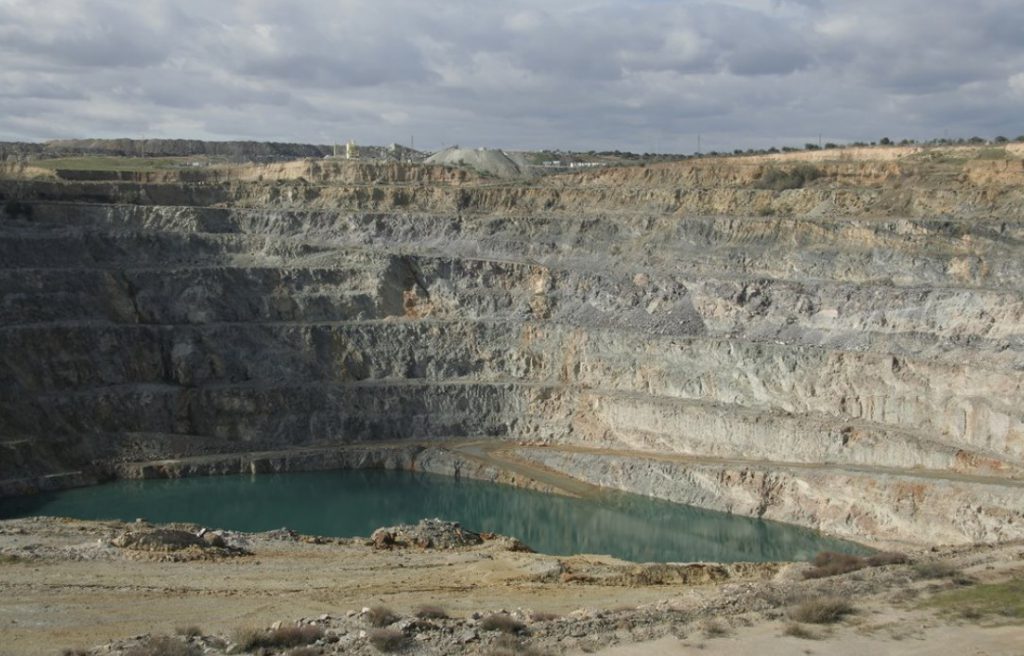Emerita drills 4.5 metres of 2.4% copper, 21.1% zinc Iberia Belt West, Spain

Emerita Resources Corp. [EMO-TSXV; EMOTF-OTC] reported assays for five additional drill holes from the Infanta drill program at the Iberia Belt West project (IBW). In addition to the diamond drilling, the company received partial results from its continuing geophysical program that are highly encouraging. The geophysical program has been suspended until after October 20, 2021, due to hunting season in the area.
Drill hole IN010 was the highlight of the current set of drill holes as it intersected 4.5 metres grading 2.4% copper, 11.2% lead, 21.1% zinc, 153.1 g/t silver and 0.54 g/t gold from 99.2 metres.
Drill hole IN013 intersected 2.2 metres grading 2.6% copper, 4.6% lead, 7.1% zinc, 196.2 g/t silver and 0.28 g/t gold from 135.6 metres, which is the deepest intersection to date.
Drill hole IN009 intersected 10.5 metres grading 0.9% copper, 1.9% lead, 3.% zinc, 55.3 g/t silver and 0.36 g/t gold from 104.2 metres.
The geophysical survey is approximately 50% completed and identified significant new targets as well as demonstrating conductors associated with the known deposits persist to depths well below the existing drilling to at least 400 metres.
Geological mapping and geophysical data indicate the mineralized horizon occurs within large structural blocks, bound by east-west-oriented reverse faults. Importantly, this has resulted in a repetition of the mineralized horizon, and greatly expands the prospectivity for new deposits to the north of the Infanta horizon. Anomalies identified in the northern horizon are newly identified and have never been drilled.
Intersection widths are expected to be approximately 90-95% of true width.
The gravimetric data show two clear Bouguer anomalies separated by 800 metres to 1.0 km that run in parallel for about 7.0 km in an east-west direction. The anomaly in the south is coincident with the mineralized horizon that hosts the Infanta deposit and El Cura. The anomaly in the north has never been drilled. Both anomalies occur within the limits of the IBW exploration permit.
Follow-up of the gravimetric anomalies is continuing using TEM methods, using the TURAM mode. Numerous TEM anomalies have been identified in the IBW project to date. From east to west, the first anomaly is an 800-metre long east-west conductor near the eastern limit of the property and remains open to both ends.
In the central area a discrete anomaly is coincident with the mineralized lenses being drilled in La Infanta. This conductor continues to the west for more than 2 km and the conductive plate extends beyond 400 metres depth. A third conductor is coincident with the Bouguer gravity anomaly in the north in an area that has never been drilled. Particularly intense is the anomaly detected in the western part of the IBW property, where the la Romanera deposit is located. These anomalies remain open along the east and west direction because the survey is not yet completed in this area. The area between Infanta and Romanera and west of Romanera are pending and will be completed after hunting season.
The company has completed phase 1 of the Infanta drill program, which was to verify the historical drilling for NI 43-101 purposes, provide fresh sample material that can be used for metallurgical testing and to verify the geological model. This phase comprised of 17 drill holes (assays pending for holes 14 to 17) and evaluated approximately 425 metres along strike and to a depth of 125 metres.
Phase 2 has commenced, whereby drilling is stepping out beyond the limits of the historical drilling, commenced with hole 18 and assays will be reported in the coming weeks. Hole 18 of phase 2 intersected 8 metres of massive sulphides (assays pending).
